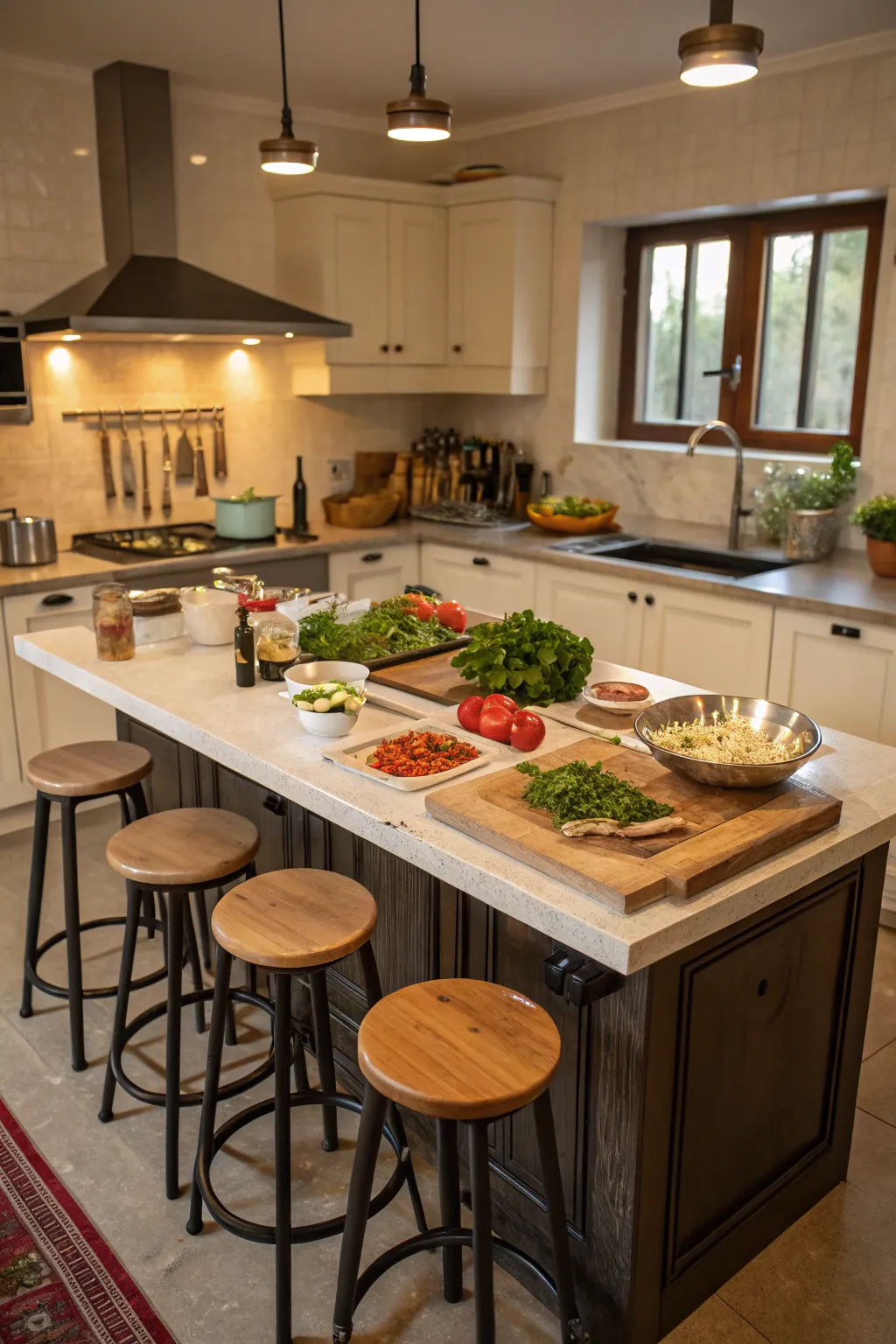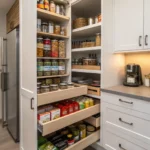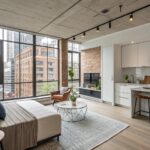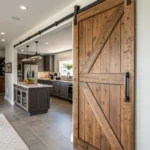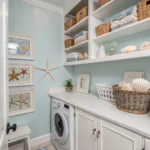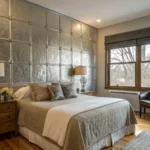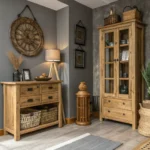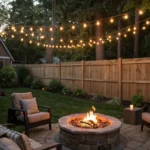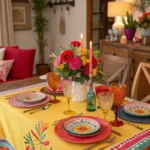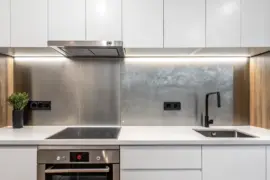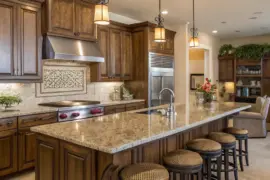When you blend your kitchen and dining room, you’re not just saving space—you’re creating a lively heart for your home. This union brings more togetherness, bigger conversations, and a space where creativity flows as freely as a shared meal.
Ready to be inspired?
Glow & Show!
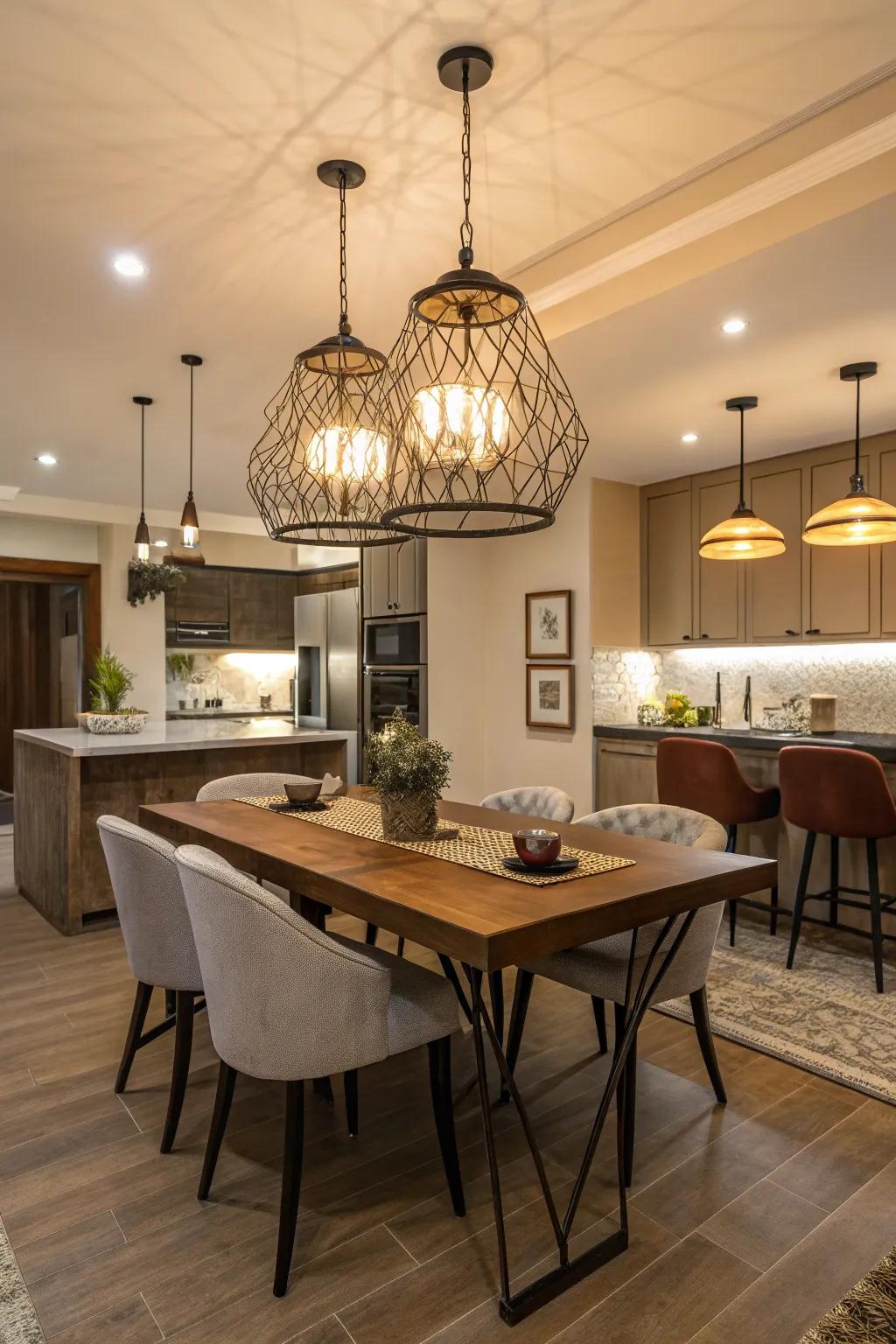
Lighting isn’t just practical—it’s personality! Pendant lighting draws the eye, spotlights your style, and casts a welcoming glow over both worktops and dining tables. Why settle for ordinary when you can create a little drama overhead? A well-placed pendant can separate spaces visually, even in an open concept, adding that signature touch often reserved for the pages of interior magazines.
Some handy options:
Walls Down, Spirits Up: The Open-Concept Connection
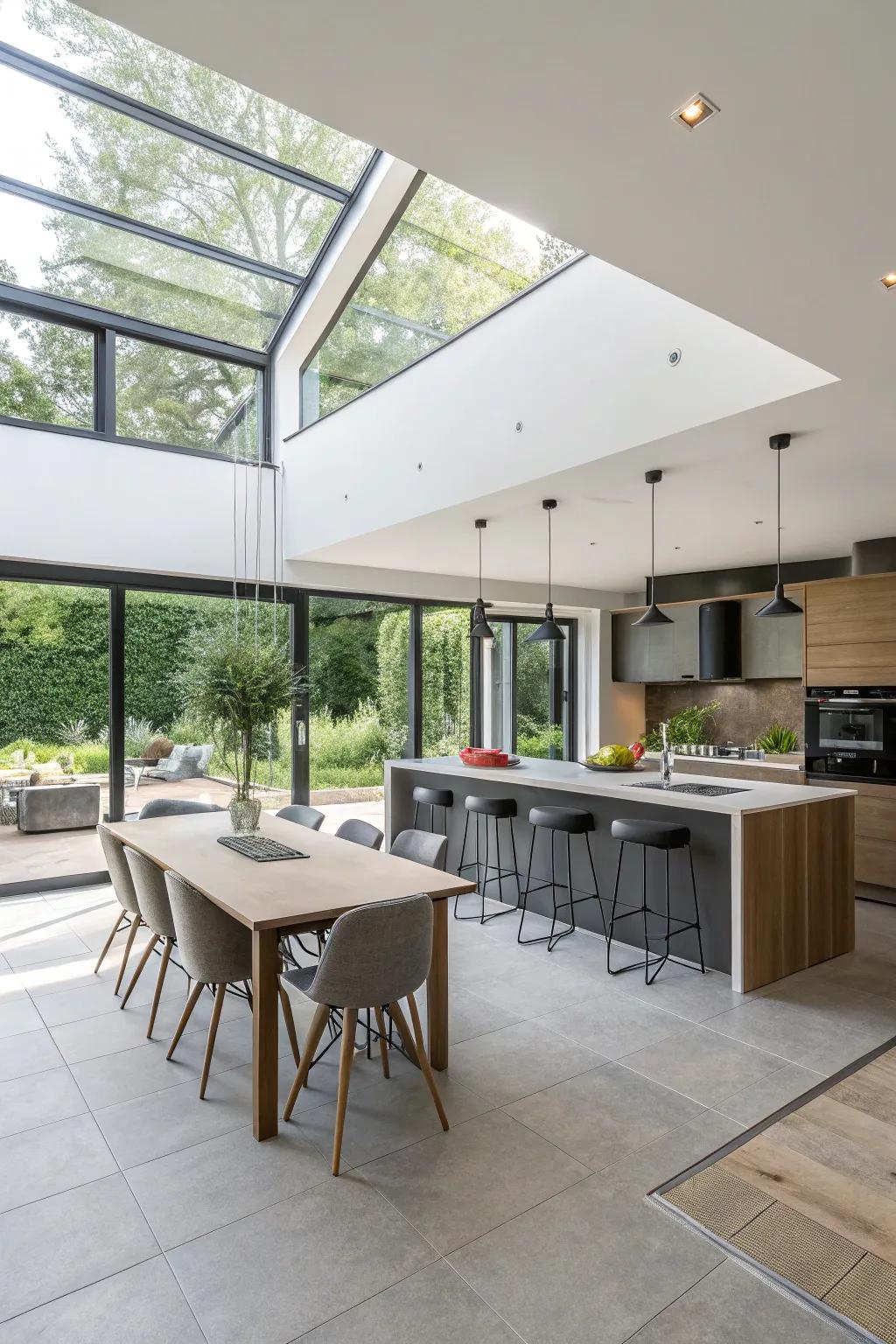
Stepping into a home where the kitchen and dining area flow seamlessly together is like taking a deep, calming breath. The once-rigid boundaries gently dissolve, welcoming both daylight and laughter into the space. If you’re craving that sense of connection and expansiveness, embracing an open layout is the answer.
I once worked with Emily and Max, a dynamic duo with a knack for hosting brunches but a cramped, divided main floor. Tearing down the wall between their kitchen and dining room worked wonders—not only did it literally open up the space, but it also opened up their gatherings. Overnight, their home became the hotspot for impromptu get-togethers and slow Sunday mornings.
Here are a few practical ways you can make the most of an open layout:
- Arrange your furniture to guide the flow from kitchen to dining, so it feels intentional rather than accidental.
- Layer in varied lighting—pendant lights above the dining table and recessed lights in the kitchen—to softly define each zone.
- Choose cohesive colors or materials to visually unite the space, creating harmony without monotony.
Open layouts are about more than just knocking down walls; they’re about tearing down the barriers to connection.
Explore these options:
Color Me Happy: Standout Shades for Spirited Spaces
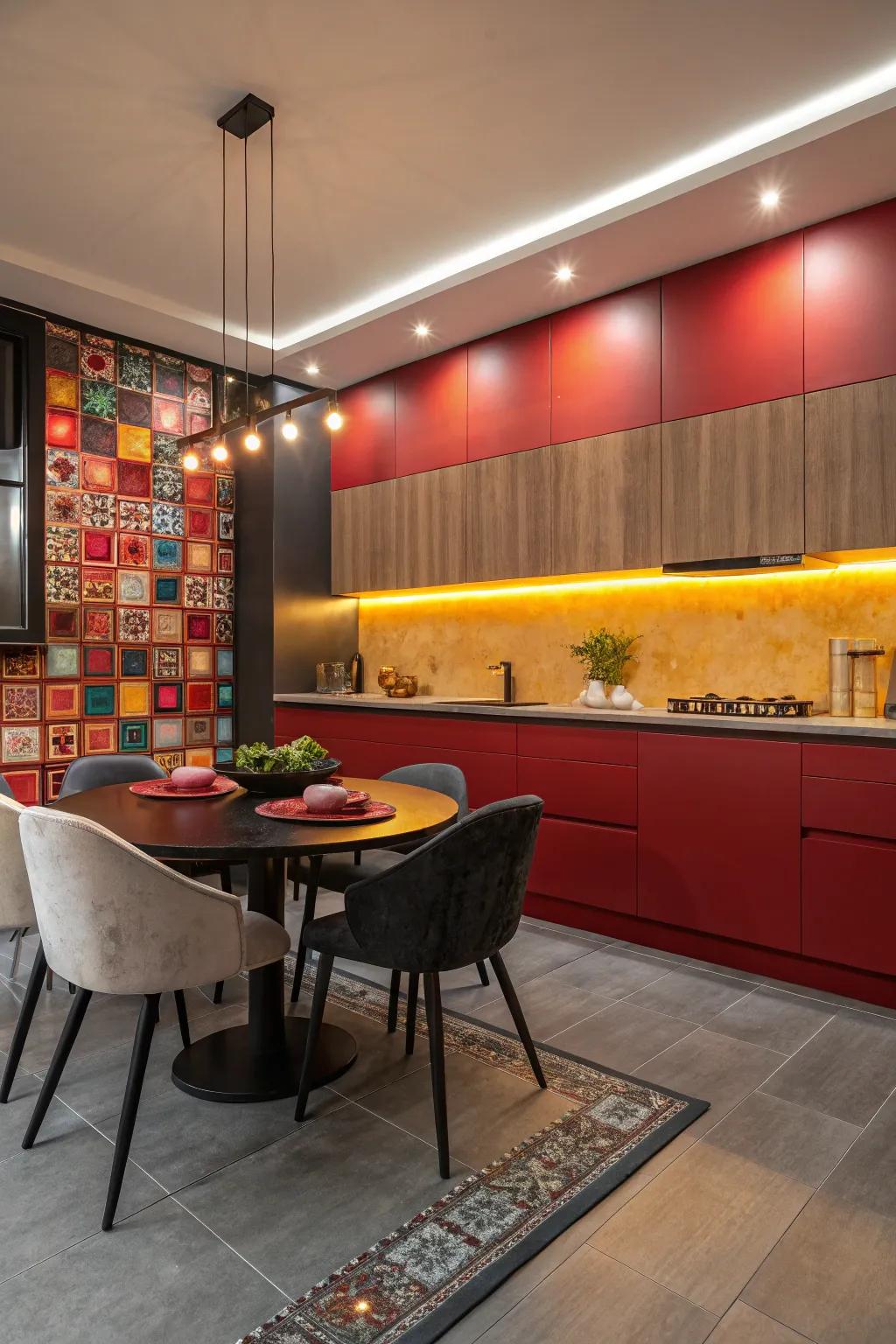
Why play it safe when you can paint the town (or your kitchen) red? Bold color choices give your space an irresistible dose of personality, making it unforgettable and uniquely yours.
Sometimes, a pop of color is all it takes to break the routine.
If you’re curious about where to begin, try these fun ideas for weaving bold hues into your kitchen-dining blend:
- Use a vibrant backsplash (turquoise, sunny yellow, or emerald green) as your room’s exclamation point.
- Paint cabinetry in a bold, unexpected color—imagine deep plum or fire engine red for instant warmth.
- Mix in a set of colorful dining chairs for a playful punch that makes every meal a celebration.
When I’m designing with clients eager for change, I always say: color is confidence! Don’t worry about following trends to the letter. Instead, ask yourself which shades bring out your best energy. Let your walls, cabinets, or favorite accessories do the talking—and if you love it, it’s right.
Go ahead—embrace your inner colorist!
Try these:
Let the Dark Shine: Warmth & Drama with Deep Woods
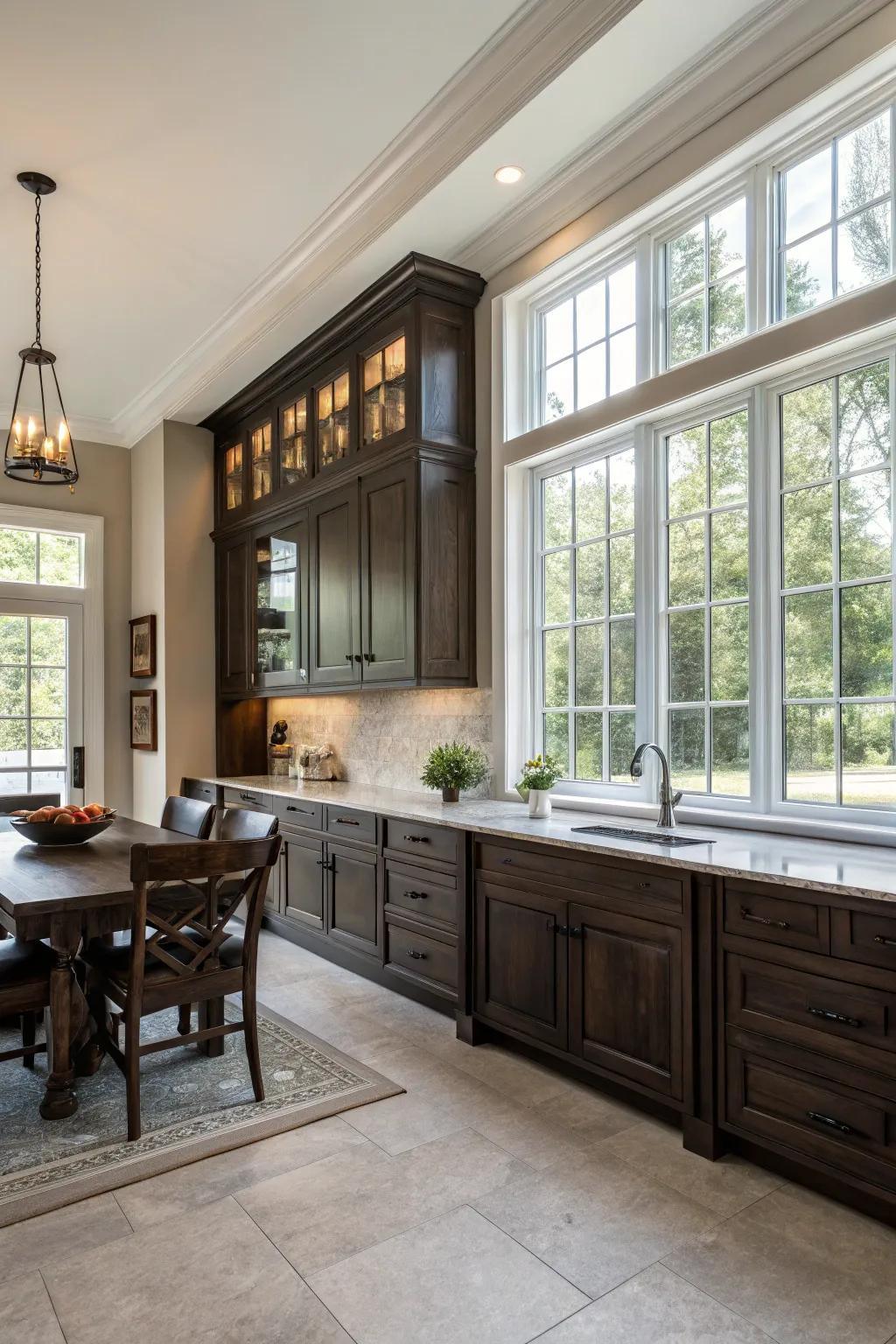
Dark wood isn’t just a classic choice—it’s a bold, beautiful decision that can truly anchor and define your combined kitchen and dining space. The deep tones exude elegance, adding a sense of depth and richness that lighter finishes just can’t match.
Don’t be afraid to let dark woods take center stage!
Here are three simple ways to bring dark wood accents into your home, creating balance and character:
- Pair dark wood cabinets or table tops with creamy white or soft grey walls for gentle contrast.
- Soften strong wood tones by layering in natural textures—think linen runners, woven baskets, or simple clay pots.
- Balance visual weight by introducing metallic or glass accents (like pendant lights) for a thoughtful glow.
I recently worked with Linda and James, who were initially hesitant about dark wood in their open kitchen-dining room. Together, we chose matte walnut cabinets and a broad, slab-style table. To keep the space airy, we painted the walls a delicate dove grey and chose light, sheer curtains. The result? The space felt cozy yet expansive—inviting for family dinners but elegant enough for festive gatherings. Their favorite touch turned out to be a cluster of glass pendant lights that danced above the table, adding sparkle without overpowering the rich wood tones.
Let your space be a canvas—sometimes, a dash of darkness is what brings everything to life.
These products might help:
How Does Layout Set the Stage for Connection?
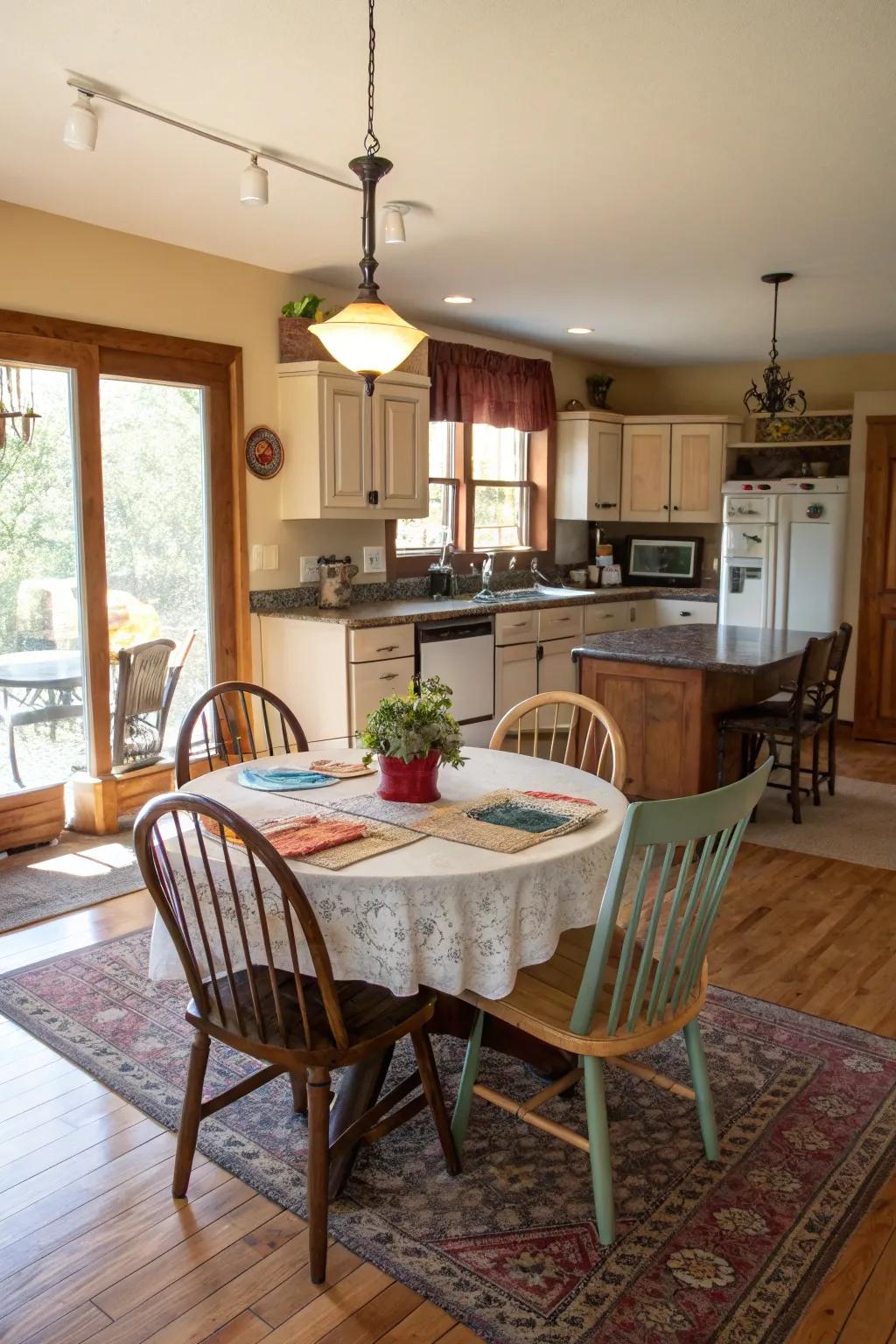
A breezy layout is all about flow—creating a space where conversation lingers and movement feels natural. The way you position your dining area within a kitchen-dining combo can influence whether your gatherings are energized or awkward. Ask yourself: does the table invite people in? Can friends or family help with food prep without feeling cramped?
Let me share some actionable layout strategies I use to transform awkward spaces into vibrant social hubs:
- Place your dining table at the center or along a natural walkway—this establishes an immediate focal point.
- Choose round or oval tables to soften lines and ease movement, especially in tight quarters.
- Anchor the space with a statement pendant light or rug to visually “zone” the dining area without walls.
One of my favorite projects was with Rachel and Ben, who had a combined space that always felt too busy. We chose a modest round table and placed it just far enough from the kitchen prep zone to allow fluid movement. Then, a woven pendant overhead defined the area, while a light runner led the eye from the kitchen—subtle, but suddenly the room breathed, inviting laughter and togetherness. You could see their faces relax with every little change.
The right layout isn’t just about looks—it’s about how it makes you feel when you walk in.
Give these a look:
Incorporate Eclectic Decor
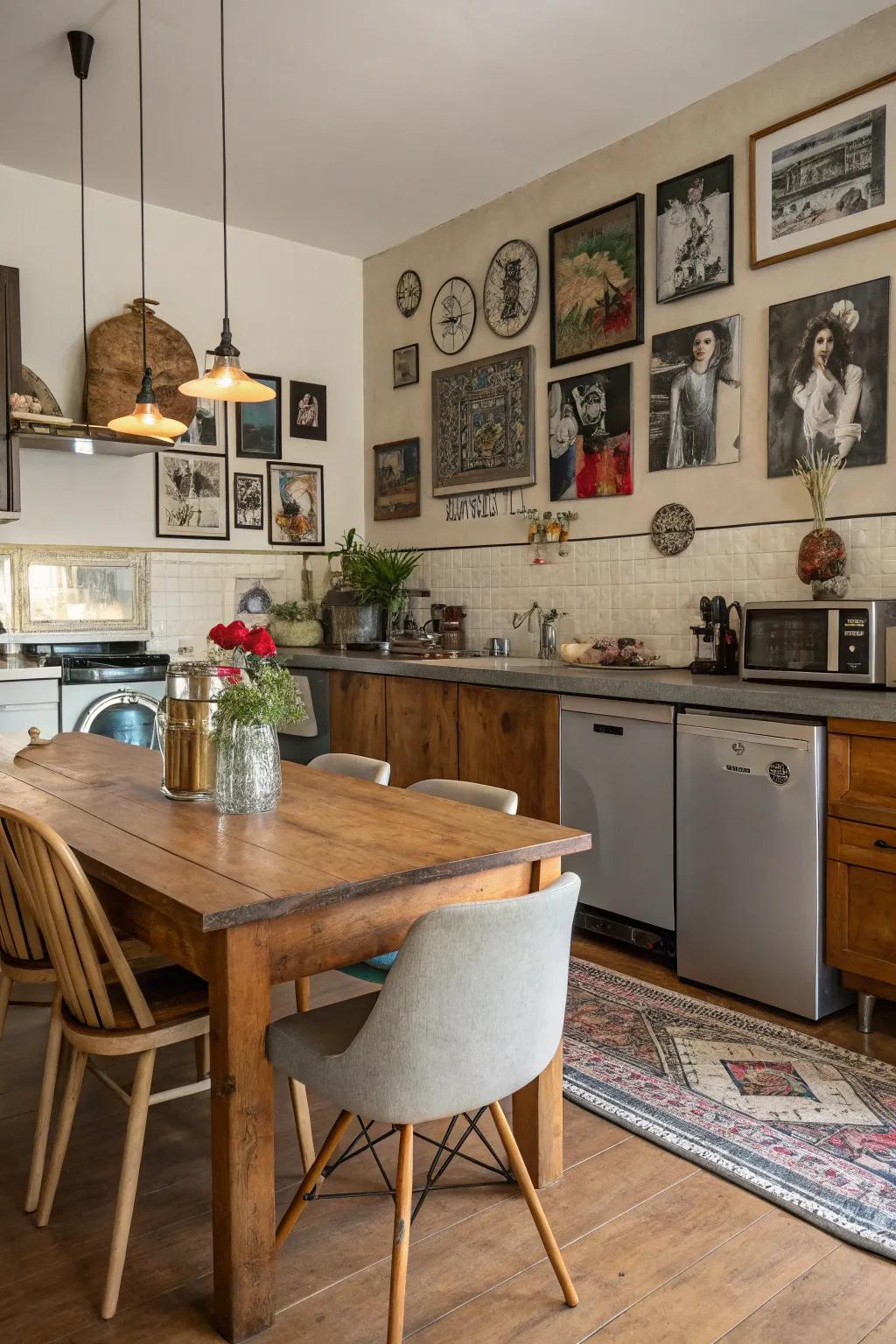
Mix vintage and modern elements for an eclectic look. This approach can create a unique, inviting atmosphere that tells a story through design.
A few helpful options:
Minimal Magic: How Little is Enough?
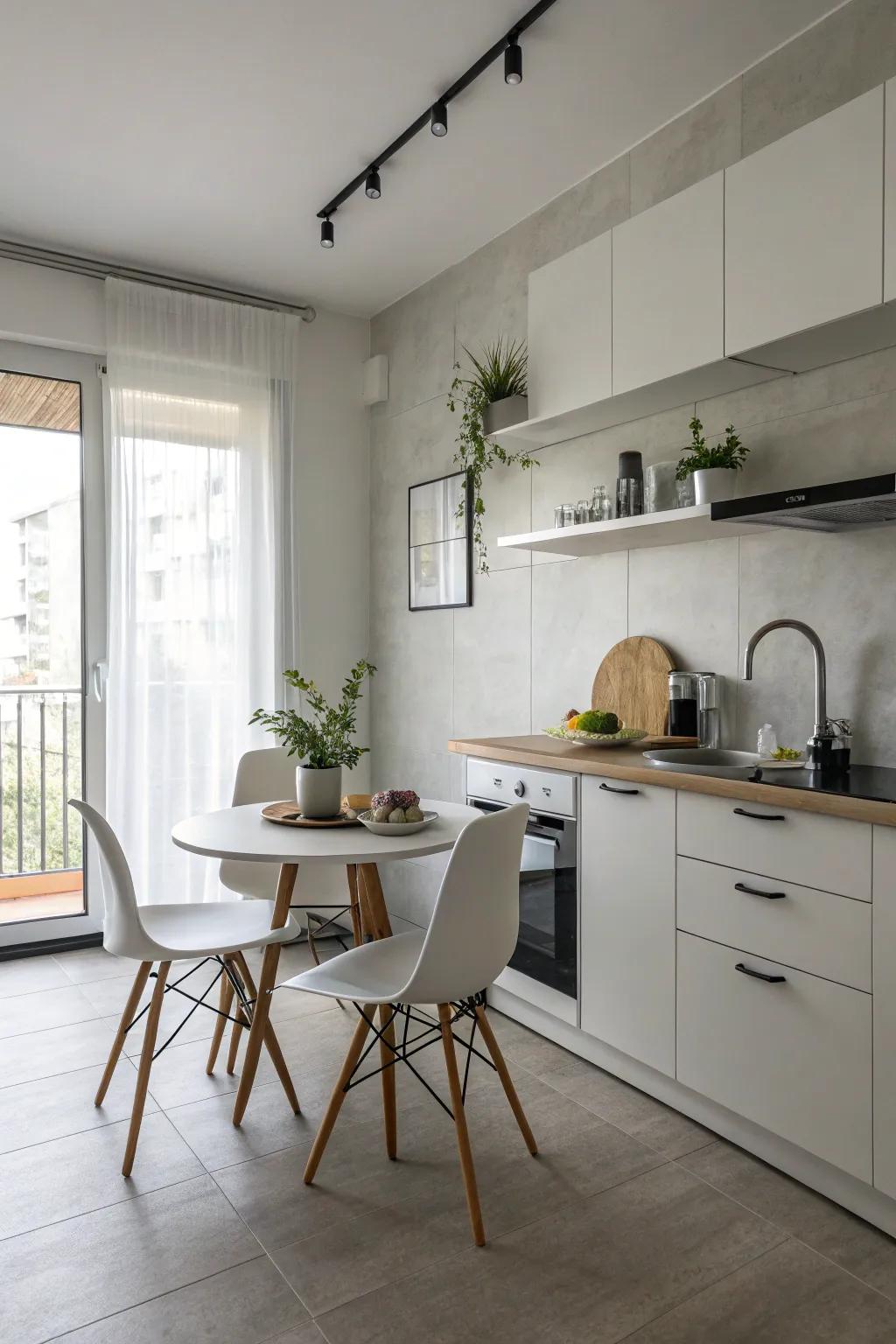
Minimalism is more than an aesthetic—it’s a calming approach to daily life. By focusing on what truly matters, your combined kitchen-dining space can become a breath of fresh air.
Edit ruthlessly, then enjoy the calm.
One clear surface, one shapely vase, one understated table—sometimes less really is more. Are you leaving enough room for living, for laughter, for light to flood in? Try removing one thing today and feel the difference.
Possibly helpful picks:
Color Cues, Happy Hues
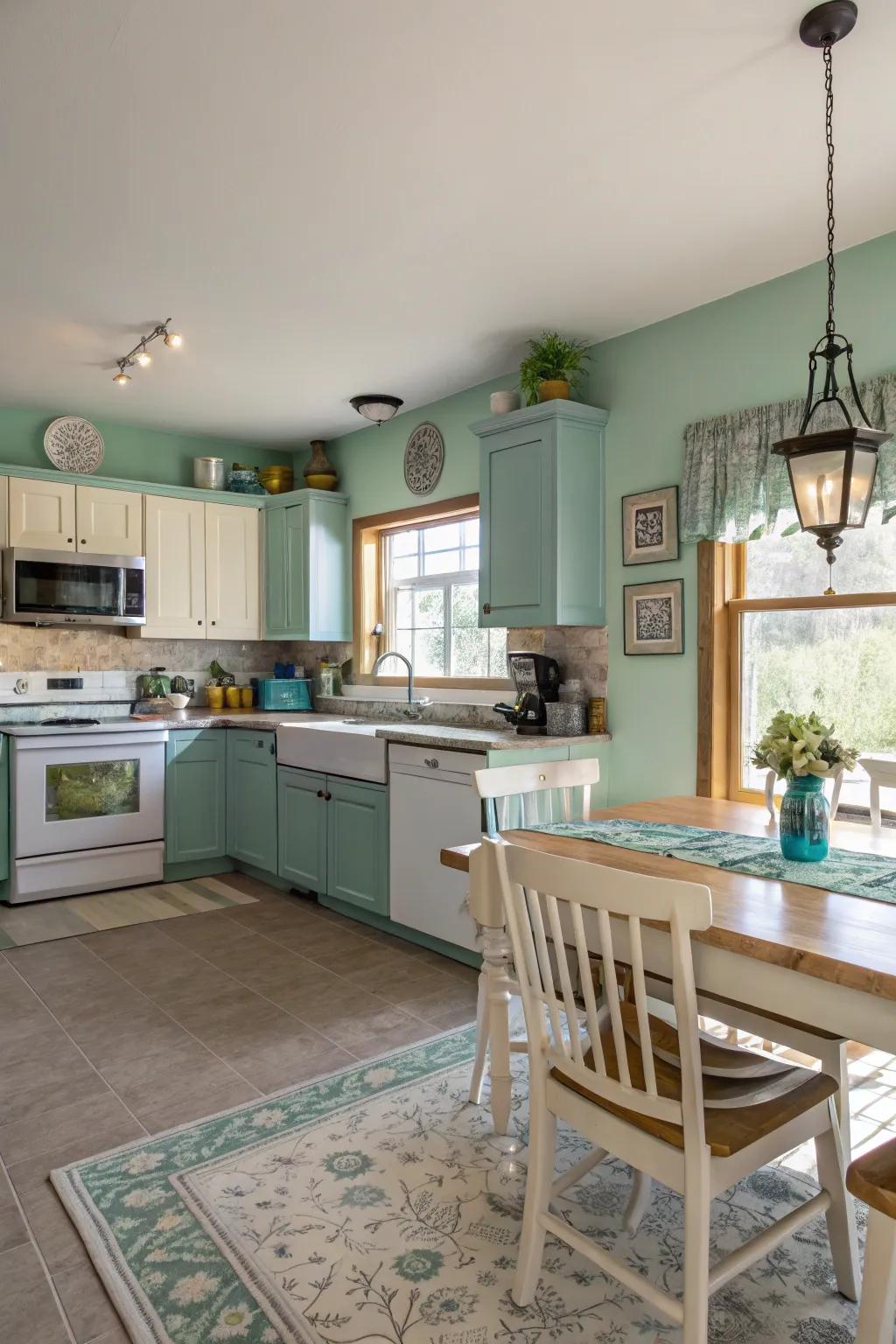
When a kitchen flows directly into a dining area, a gentle hand with color can do wonders. I like to think of color as the thread that weaves these spaces into a seamless, inviting tapestry.
- Choose one dominant neutral for both spaces, then accent with two subtle shades for personality.
- Use accessories—like vases or art—to echo a color from the kitchen in your dining nook (or vice versa).
A well-chosen palette doesn’t just please the eye—it welcomes you in every time.
Whether you fancy tranquil pastels or bursts of teal, keep the energy cohesive but not monotonous. Let the colors hint at each area’s purpose while blending them with a creative twist.
Useful items to consider:
Mix Things Up: Create a Welcoming Seating Blend
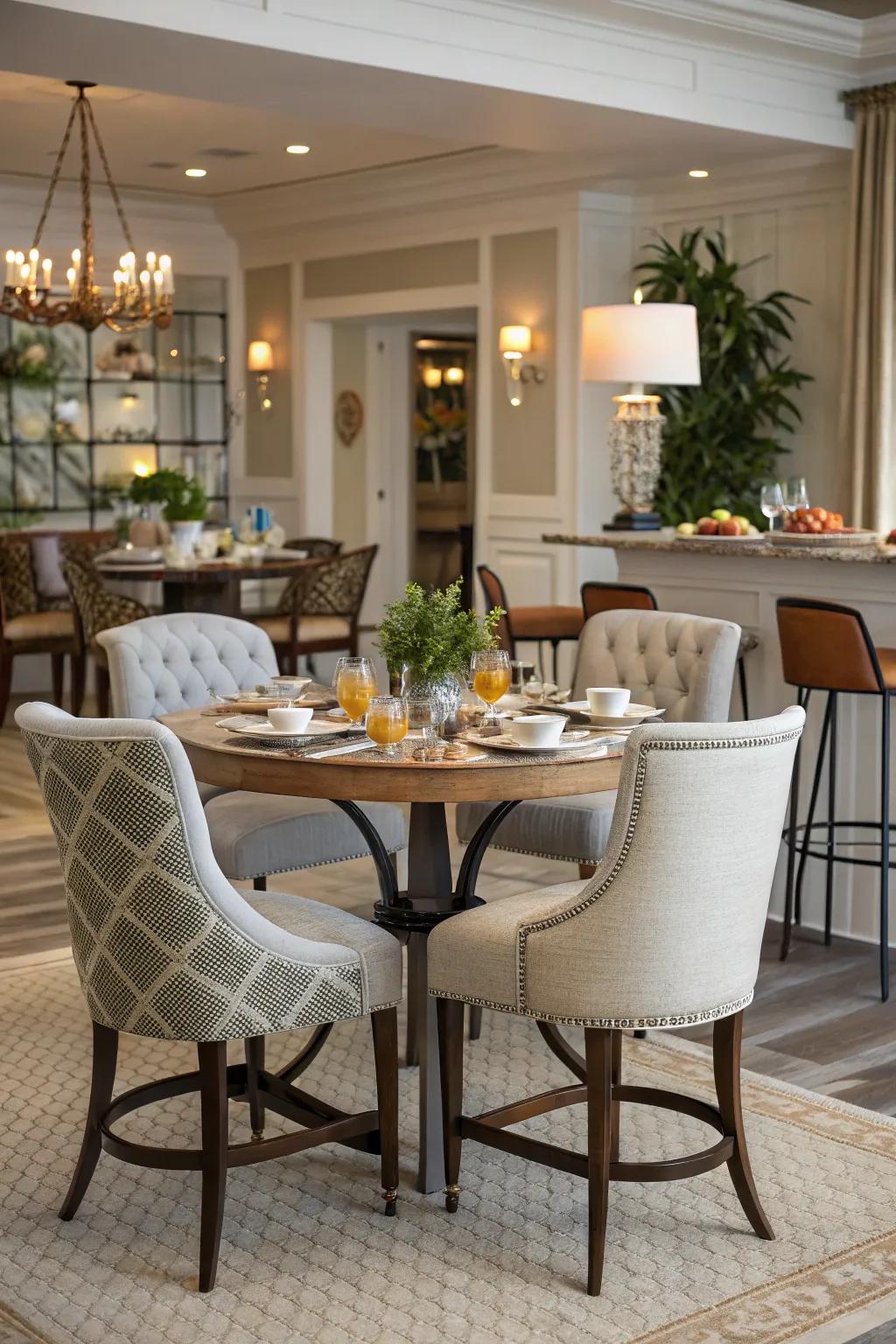
Why stick to one style when you can have a melting pot of seating? Mixing formal dining chairs with casual stools isn’t just on-trend—it’s a celebration of comfort, flexibility, and personality in your kitchen-diner.
I remember helping Tasha and Priya, two friends who loved hosting cozy dinner parties. Their challenge? Creating a seating plan that felt special for celebrations but remained relaxed for everyday meals. We experimented with elegant, high-backed dining chairs for the main table and partnered them with playful counter stools tucked near the kitchen island. Suddenly, their space shifted from staid to spectacular!
Here are my favorite ways to bring versatility to your setup:
- Combine two or three chair styles in complementary colors for an eclectic vibe.
- Use bench seating along one side—it’s great for kids or surprise guests.
- Try chairs with removable slipcovers for easy seasonal updates or spill emergencies.
Go ahead—pull up a chair, a stool, or a bench!
A thoughtful mix doesn’t just boost seating capacity; it invites guests to linger, chat, and make memories. With a blend that’s both practical and playful, you’ll always have the right seat for every occasion (and every personality) that comes through your door.
You might give these a try:
Blend Textures, Mix Materials—Make Your Space Truly Yours
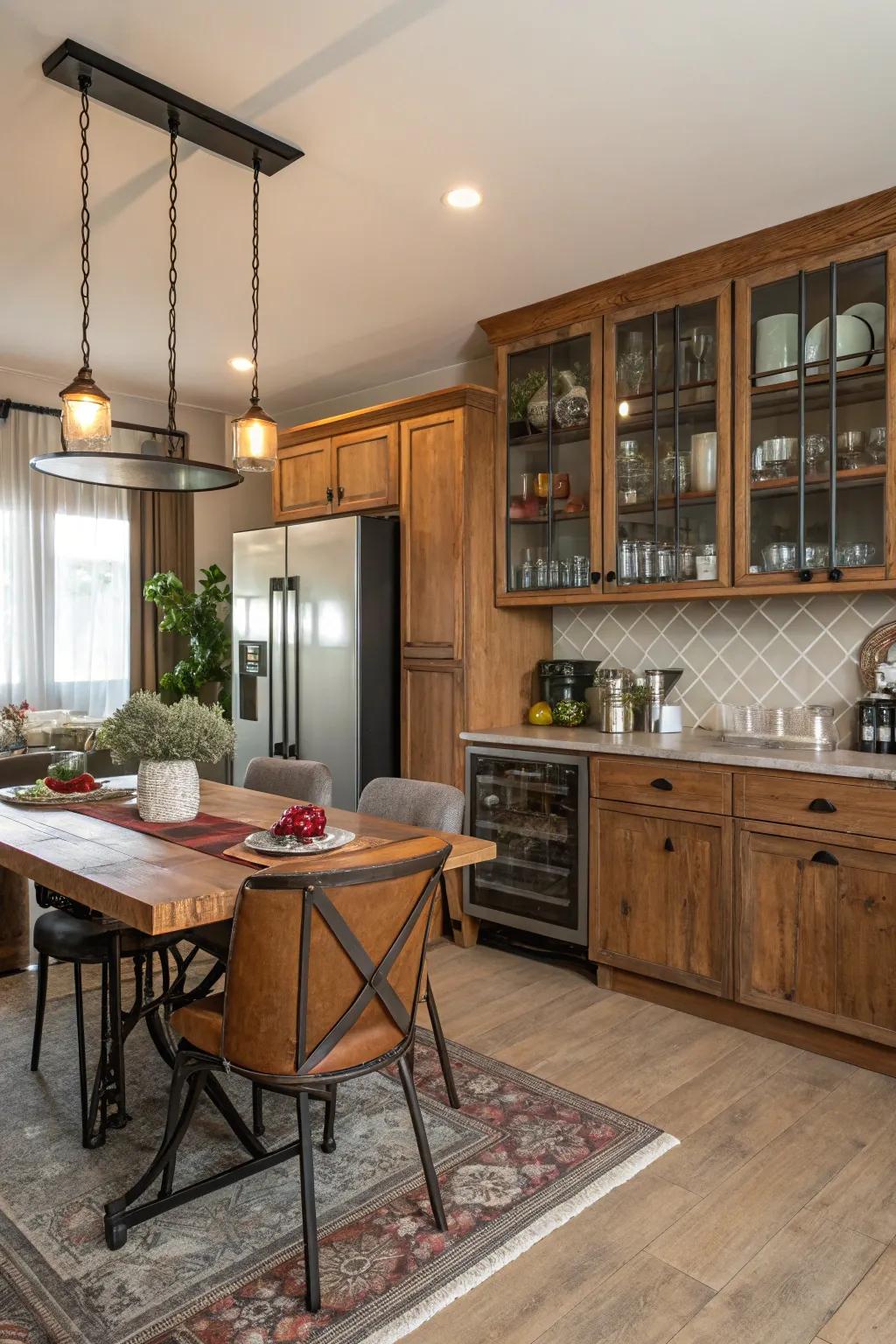
Layering wood, metal, and glass in one space adds not only visual interest but also a tactile story to your room. Each material brings its own personality, and mixing them thoughtfully is like inviting different friends to the same dinner party—they balance and complement one another beautifully.
- Wood: Warms up the room and brings in natural texture.
- Metal: Adds a modern edge and a dash of shine.
- Glass: Keeps things feeling open and light.
- A touch of stone or ceramic: For earthiness and a handmade vibe.
Start with a base you love, then add layers thoughtfully. With just a few material swaps, you can elevate your combined kitchen-dining area from “nice” to magazine-worthy.
Consider these options:
How Can You Store More but See Less?
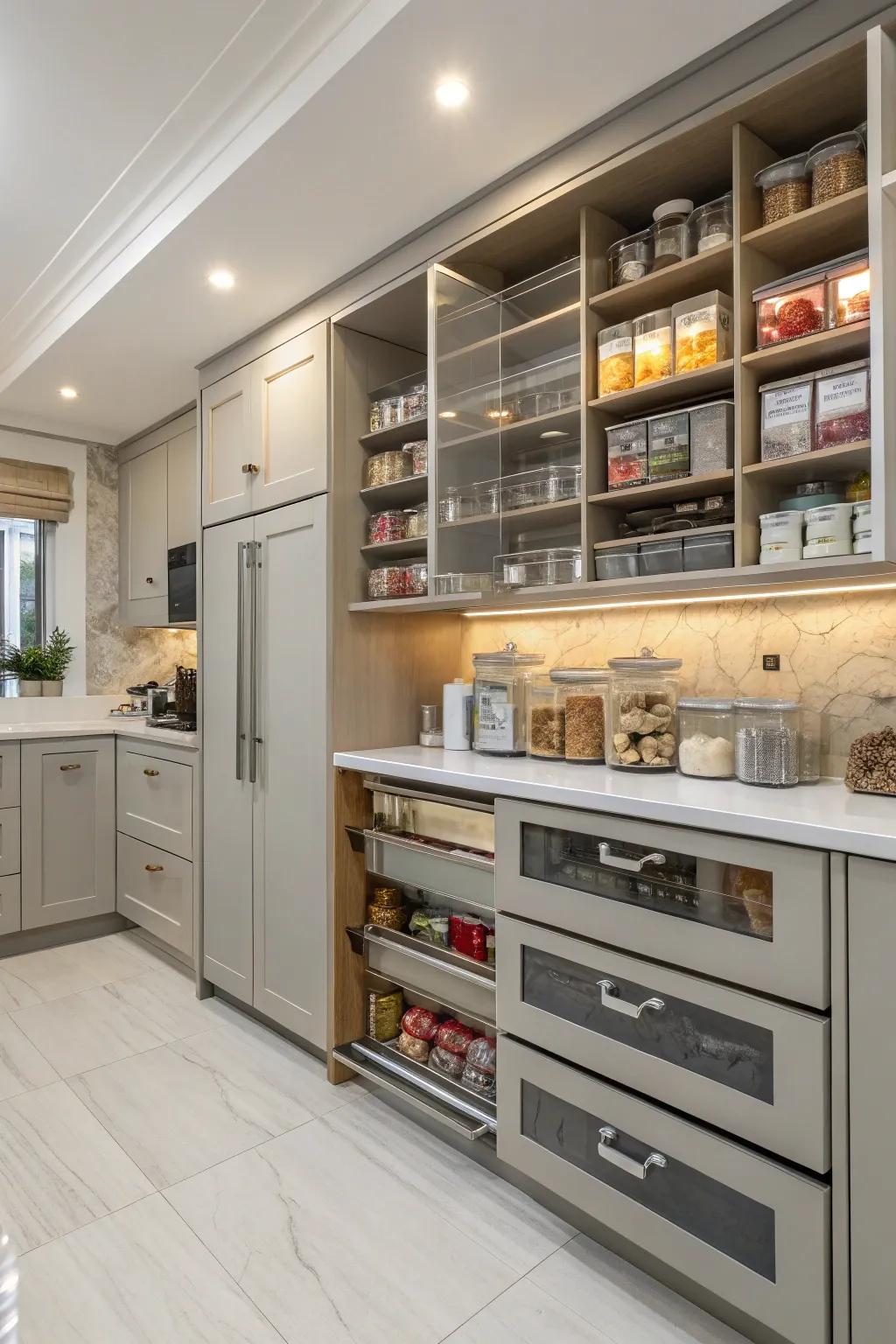
Blending kitchen and dining areas doesn’t just mean doubling the style; it means getting clever about how you store all your essentials. A well-organized, open-feeling zone always starts with smart storage—and a dash of creativity.
Recently, I worked with the Lawsons, who dreamed of a spacious ambiance in their compact family kitchen-diner. We explored an approach I call ‘vertical zoning,’ using available height for clever storage that never feels bulky. I suggested options such as:
- Open shelving above work surfaces for everyday dishes
- Pull-out cabinets behind closed doors to hide clutter
- Sleek, under-bench drawers for table linens and board games
- Tiered baskets to keep fruit and snacks within reach
When we finished, their space felt so much bigger—like it had grown overnight! The Lawsons loved how everything had its place, from Saturday pancakes to holiday platters. Family mealtimes became less of a scramble and more of a celebration.
Isn’t it amazing how less really can be more in a shared space? Keep only what you love and use, and let creativity help you store it in style.
A few things you might like:
Pep Up Your Personality: Decorative Touches with Heart
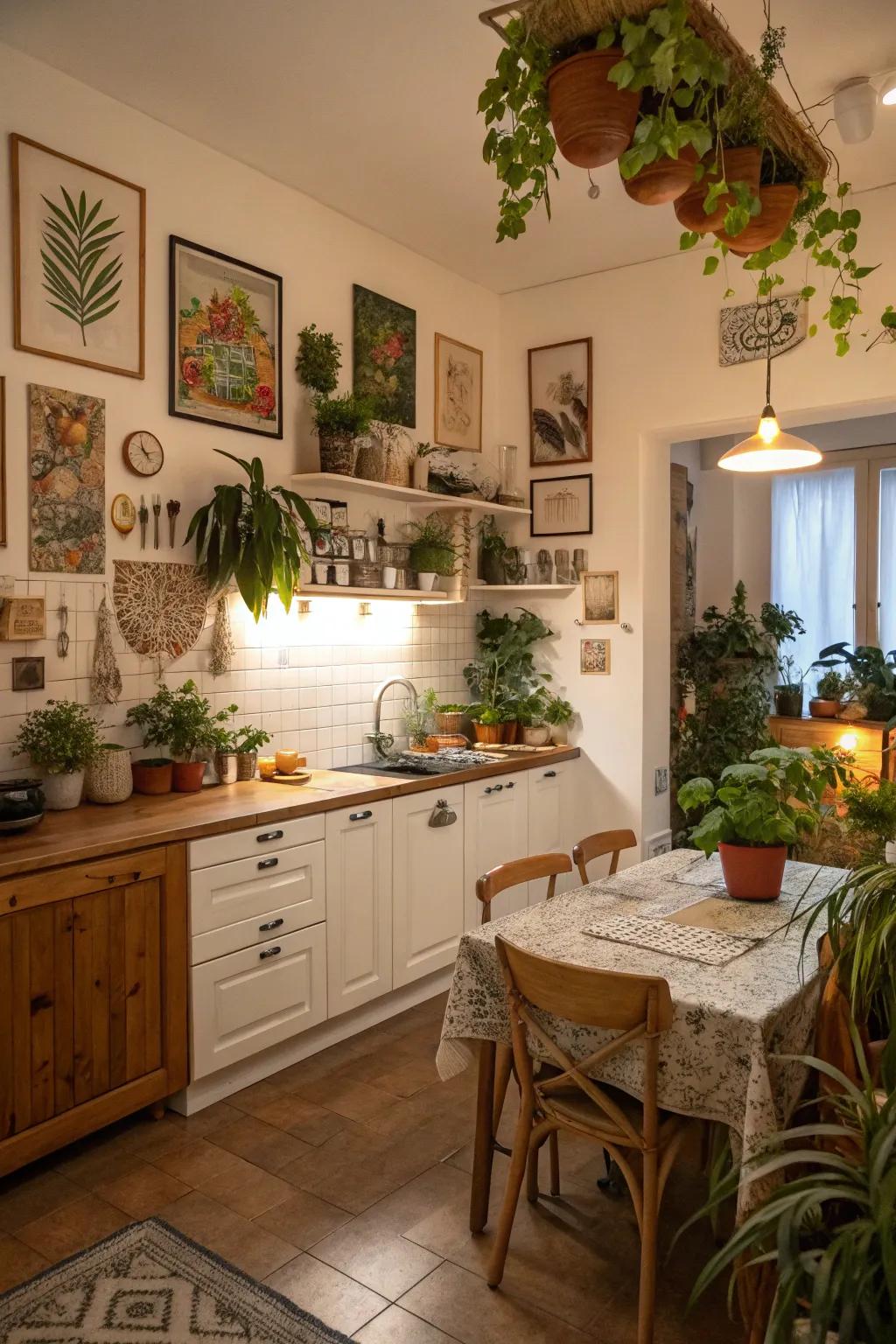
When I step into a kitchen-dining combo, the very first thing I notice isn’t the furniture—it’s the soul of the space. That soul? It’s found in distinctive, meaningful decorative accents.
Adding personality to your space doesn’t have to mean clutter. In fact, the right details can create a sense of harmony and style that feels both fresh and authentic. Start small but think intentionally. Here are a few of my go-to ways to add purposeful flair:
- Display a collection of framed botanical prints for an instant connection to nature.
- Hang planters at varying heights—this draws the eye up and layers in lush greenery.
- Choose potted plants that thrive indoors, like snake plants or pothos, for beauty and ease.
- Style open shelving with a mix of favorite ceramics and natural textures.
It’s the little things that tell your story.
I remember working with a wonderful client, Marisa, who struggled to make her combined kitchen and dining space feel warm. Together, we chose a bold fiddle leaf fig for the corner and sprinkled in vintage art she’d collected over the years. Watching her face light up as her room began to reflect her personality was one of those “aha” moments that always stay with me.
Check these products out:
Small Space, Big Taste!
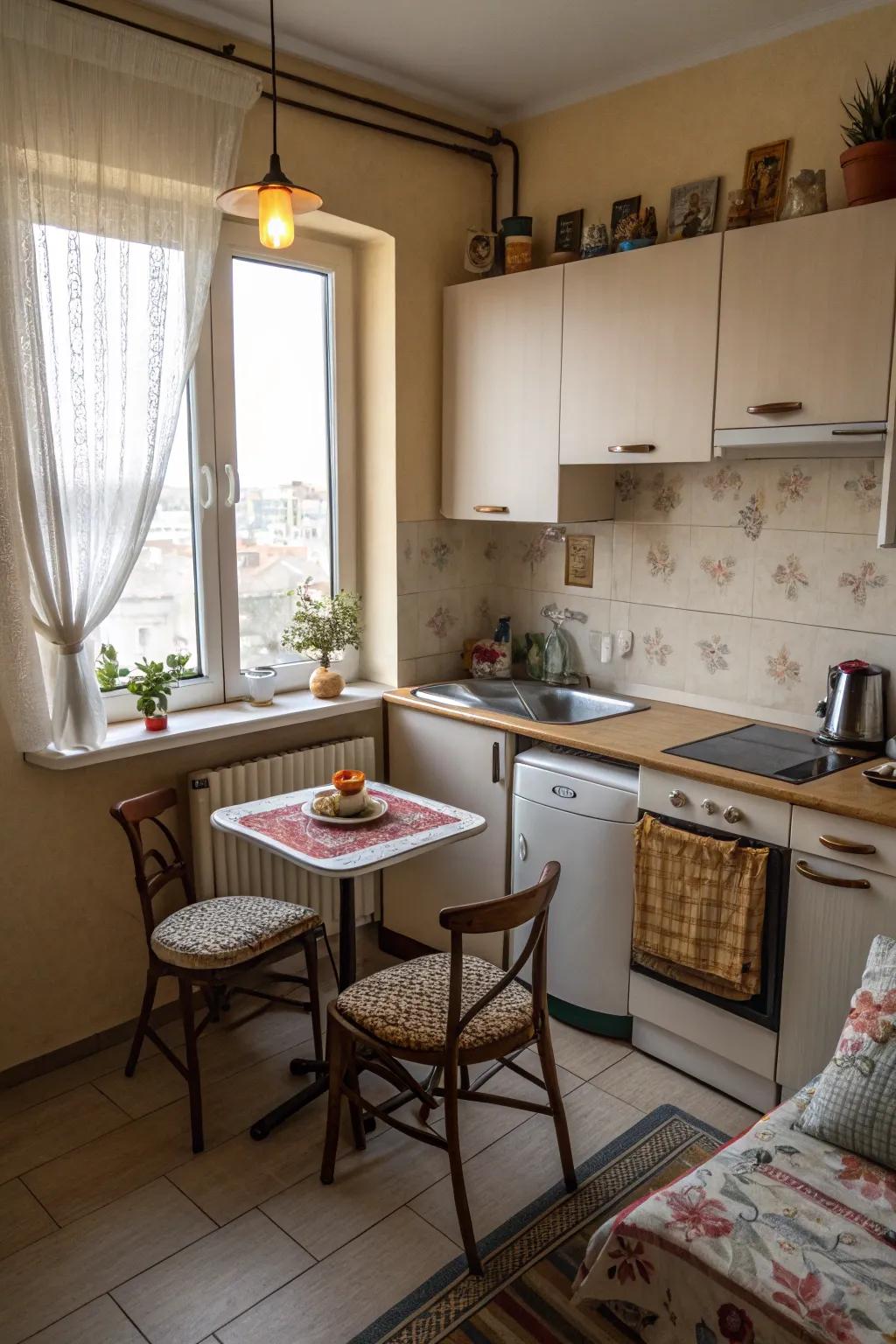
If your kitchen-diner leans on the petite side, don’t fret! Choose compact furniture to keep things feeling open and light. Even a tiny table, paired with cozy chairs, can be the perfect recipe for a welcoming, intimate spot.
Less is more—every inch counts.
You might like:
Greige Magic

There’s something almost poetic about a greige palette—its subtlety quietly transforms a room. Greige (that perfect blend of grey and beige) creates a canvas that’s both modern and inviting. It’s a timeless choice, and I always find myself coming back to it for clients who want versatility.
Looking for a way to prevent your space from feeling flat? Try balancing greige walls with different textures—think nubbly throws, leather chairs, or soft rugs.
A few relevant products:
Light and Bright: Let it Delight!

Natural light has a magical way of making a room feel alive, airy, and oh-so-welcoming.
When you open up your kitchen and dining area, sunlight can dance across both spaces, creating a warm, energetic vibe that’s contagious.
I often ask my clients: Why let sunlight go to waste behind heavy curtains or solid doors? When I worked with Sam and Julie, their combined kitchen-dining room was cursed with a single, tiny window.
We swapped it out for an oversized one, added a set of sleek sliding doors, and the transformation was immediate. Their mornings are now filled with golden rays—Sam says even his coffee tastes better in the new light.
Letting light in is never just about aesthetics. It’s about mood, well-being, and feeling a little more connected to the world outside your window. Have you ever noticed how differently your home feels on a sunny morning? That’s the magic of natural light harnessed just right.
Check if these fit your needs:
Is Your Island Doing Double Duty?
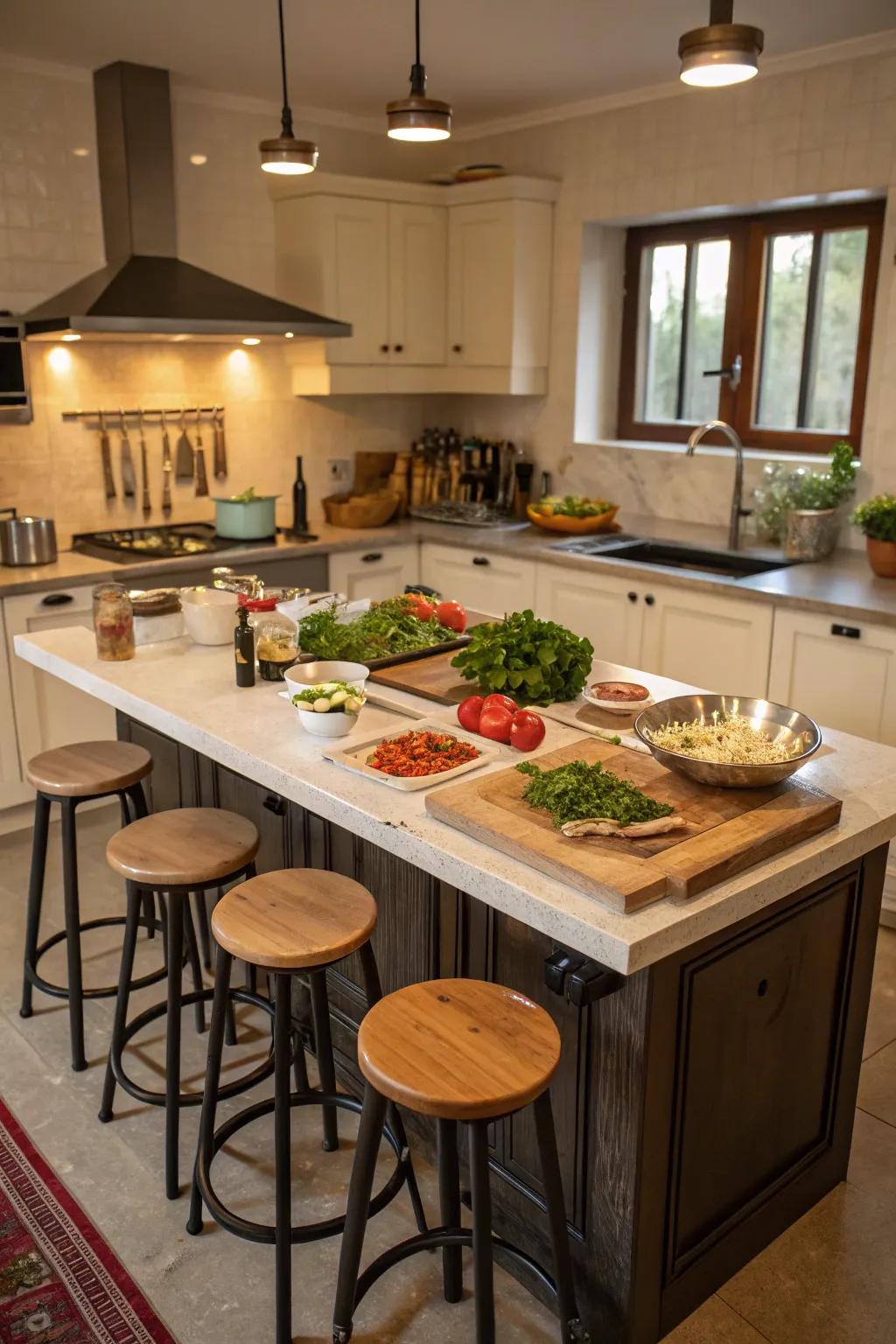
Think of your kitchen island as more than just an extra countertop—it can truly be the heartbeat of your combined space. An island draws people in, offering a spot for prepping, chatting, or simply sipping coffee.
One tip: If you’re looking to maximize both form and function, consider:
- Adding comfy stools so it’s easy to linger and chat.
- Using stylish trays or bowls to keep essentials organized but within easy reach.

